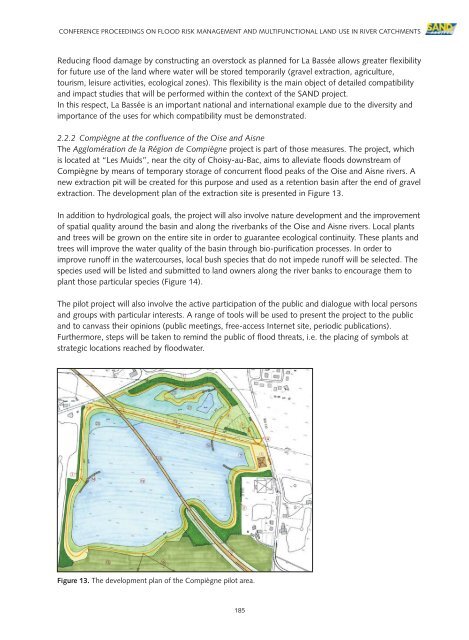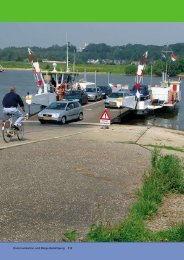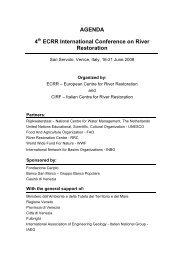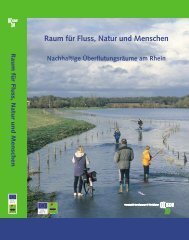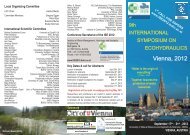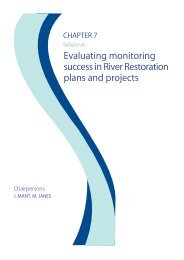multifunctional land use - European Centre for River Restoration
multifunctional land use - European Centre for River Restoration
multifunctional land use - European Centre for River Restoration
You also want an ePaper? Increase the reach of your titles
YUMPU automatically turns print PDFs into web optimized ePapers that Google loves.
CONFERENCE PROCEEDINGS ON FLOOD RISK MANAGEMENT AND MULTIFUNCTIONAL LAND USE IN RIVER CATCHMENTS<br />
Reducing flood damage by constructing an overstock as planned <strong>for</strong> La Bassée allows greater flexibility<br />
<strong>for</strong> future <strong>use</strong> of the <strong>land</strong> where water will be stored temporarily (gravel extraction, agriculture,<br />
tourism, leisure activities, ecological zones). This flexibility is the main object of detailed compatibility<br />
and impact studies that will be per<strong>for</strong>med within the context of the SAND project.<br />
In this respect, La Bassée is an important national and international example due to the diversity and<br />
importance of the <strong>use</strong>s <strong>for</strong> which compatibility must be demonstrated.<br />
2.2.2 Compiègne at the confluence of the Oise and Aisne<br />
The Agglomération de la Région de Compiègne project is part of those measures. The project, which<br />
is located at “Les Muids”, near the city of Choisy-au-Bac, aims to alleviate floods downstream of<br />
Compiègne by means of temporary storage of concurrent flood peaks of the Oise and Aisne rivers. A<br />
new extraction pit will be created <strong>for</strong> this purpose and <strong>use</strong>d as a retention basin after the end of gravel<br />
extraction. The development plan of the extraction site is presented in Figure 13.<br />
In addition to hydrological goals, the project will also involve nature development and the improvement<br />
of spatial quality around the basin and along the riverbanks of the Oise and Aisne rivers. Local plants<br />
and trees will be grown on the entire site in order to guarantee ecological continuity. These plants and<br />
trees will improve the water quality of the basin through bio-purification processes. In order to<br />
improve runoff in the watercourses, local bush species that do not impede runoff will be selected. The<br />
species <strong>use</strong>d will be listed and submitted to <strong>land</strong> owners along the river banks to encourage them to<br />
plant those particular species (Figure 14).<br />
The pilot project will also involve the active participation of the public and dialogue with local persons<br />
and groups with particular interests. A range of tools will be <strong>use</strong>d to present the project to the public<br />
and to canvass their opinions (public meetings, free-access Internet site, periodic publications).<br />
Furthermore, steps will be taken to remind the public of flood threats, i.e. the placing of symbols at<br />
strategic locations reached by floodwater.<br />
Figure 13. The development plan of the Compiègne pilot area.<br />
185


